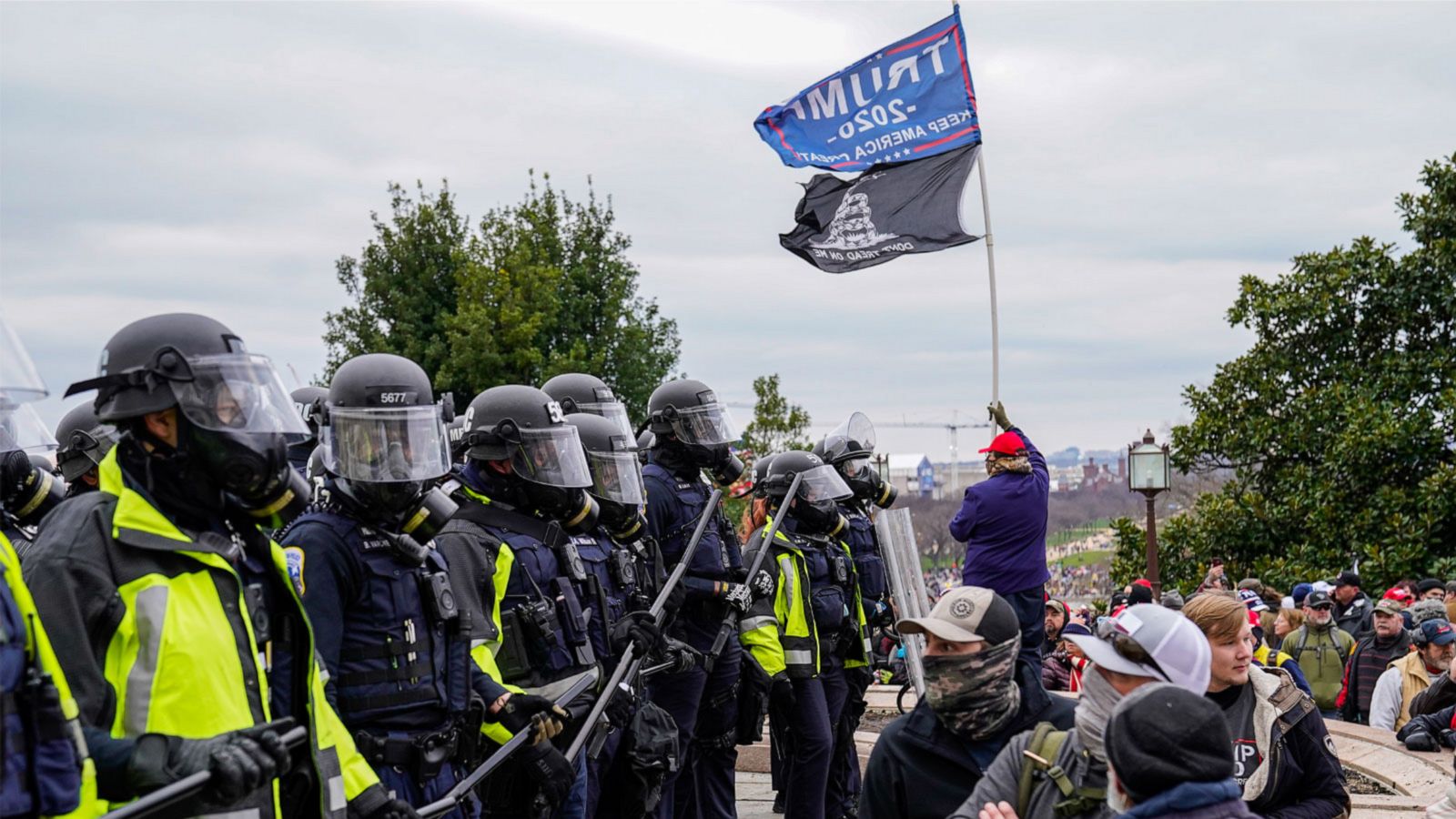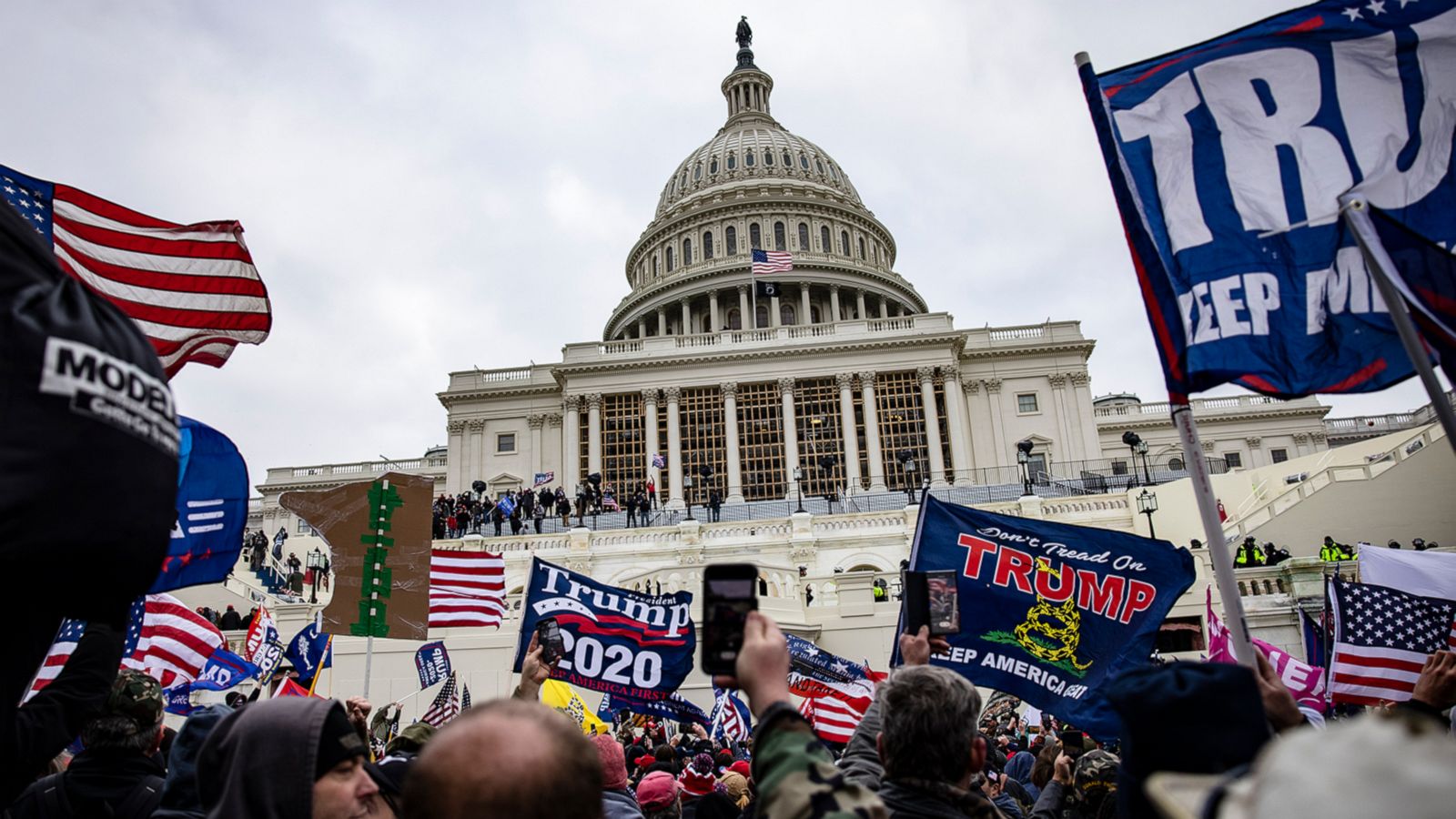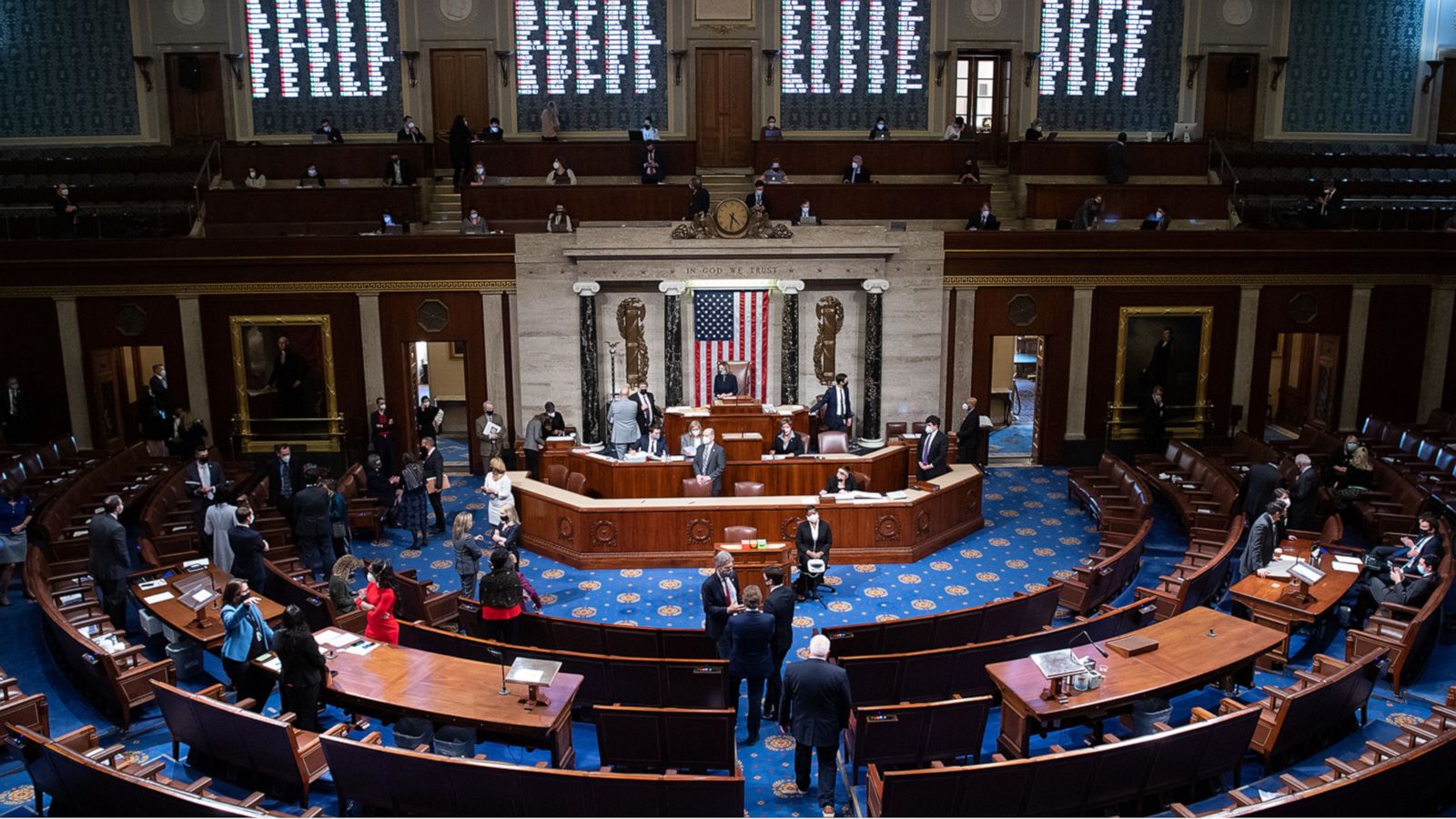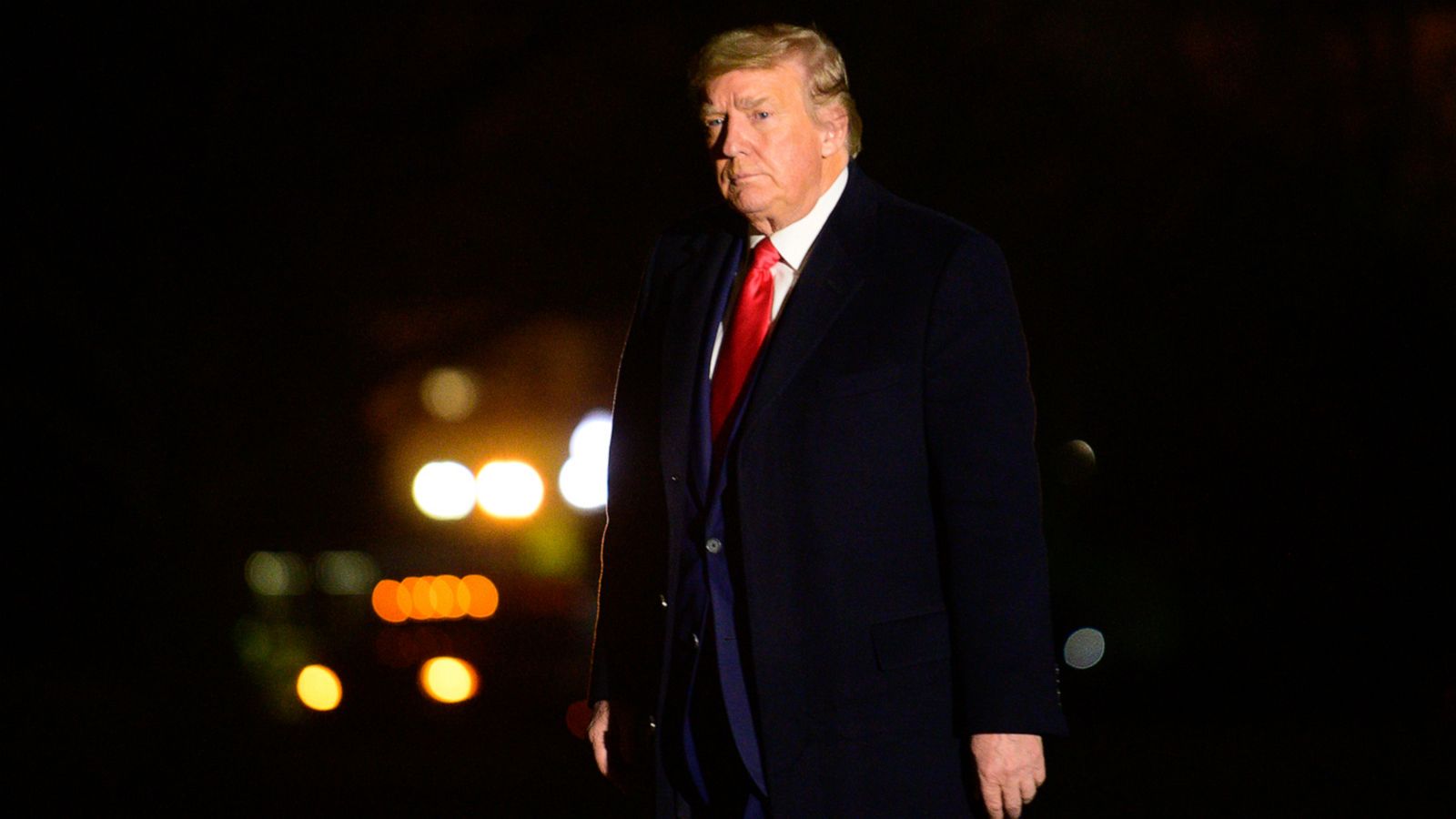How Has The Radical Right Evolved Under Trump?
Welcome to FiveThirtyEight’s politics chat. The transcript below has been lightly edited.
sarahf (Sarah Frostenson, politics editor): Last Wednesday, the U.S. Capitol was attacked by a mob of President Trump’s supporters, many of whom had very explicit and not so explicit ties to right-wing extremism in the U.S. There are reports now, too, that there could be subsequent attacks in state capitals this weekend. President Trump’s time in office has undoubtedly had a mainstreaming effect on right-wing extremism, too, with as many as 20 percent of Americans saying they supported the rioters. But as we also know, much of this predates Trump, too. Right-wing extremism has a long, sordid history in the U.S.
The big question I want to ask all of you today is twofold: First, how did we get here, and second, where do we go from here?
Let’s start by unpacking how right-wing extremism has changed in the Trump presidency. How has it?
[Related: How Trump And COVID-19 Have Reshaped The Modern Militia Movement]
ameliatd (Amelia Thomson-DeVeaux, senior writer): Well, the first and most obvious thing is that Trump has spoken directly to right-wing extremists. That is to say, using their language, condoning previous armed protests at government buildings and explicitly calling on them to support and protect him. And that, probably unsurprisingly, has emboldened right-wing extremists and made their extremism seem — well, less extreme.
That goes for a wide array of extremists in the U.S., too. I’m thinking, of course, about Trump’s comment after the white supremacist violence in Charlottesville, Virginia, when he said there were “very fine people on both sides.” But Trump has also encouraged white Christian nationalists, anti-government extremists and other groups and individuals that I certainly never thought I’d hear a president expressing sympathy or support for.
jennifer.chudy (Jennifer Chudy, political science professor at Wellesley College): Absolutely, Amelia. And while the actual extremists may represent a small group of the public, the share of Republicans who support their behavior, whether explicitly or implicitly, is not as small. This is, in part, due to mainstream political institutions — like the Republican Party, with Trump at its helm — helping make their mission and behavior seem legitimate.
maggie.koerth (Maggie Koerth, senior science writer): I’ve been talking to experts about this all week, and I think it’s really interesting how even the academics who study this stuff are kind of arguing over the role class plays in it. People like Christian Davenport at the University of Michigan have argued that we should understand that all of this is happening in the context of decades of growing income inequality and political stagnation. In other words, he contends that there are legitimate reasons to be angry at and mistrust the government. But it also seems like this crowd was not even close to being uniformly working class and probably contained people from a range of different backgrounds. And that’s why I liked one of the points Joseph Uscinski at the University of Miami made: We might be seeing a coalescing of two groups: the people who have been actually hurt by that inequality and are angry about it AND the people who are doing pretty well but who feel like somebody might come and take that away. And, of course, both those positions can dovetail very easily into racial animus and white supremacy.
ameliatd: That’s interesting, Maggie. As you alluded to, though, it’s important to be clear that economic anxiety — which was used in the aftermath of Trump’s election to explain why so many Americans voted for a candidate who framed much of his candidacy around animus toward nonwhite people — doesn’t mean that racism or white supremacy isn’t a driving force here, too.
Part of what’s so complex about the mob that attacked the Capitol is that it was a bunch of different people, with somewhat disparate ideologies and goals, united under the “stop the steal” mantra. But underlying a lot of that, even people’s anger over economic inequality or mistrust in institutions, is the fundamental idea that white status and power are being threatened.
jennifer.chudy: There is also just a lot of evidence in political science that racial attitudes are associated with emotions like anger. Two great books, one by Antoine Banks of the University of Maryland and the other by Davin Phoenix of the University of California, Irvine, consider this point in depth. Insofar as right-wing extremists express anger at the system (in contrast to fear or disgust), their anger appears more likely to be motivated by racial grievances than by economic ones.
Additionally, the Republican Party’s base has, for years now, become more racially homogeneous, in part because of the party providing a welcome home to white grievances. But some have argued that this has also been exacerbated by the Democratic Party speaking more explicitly about racial inequality in the U.S., something that wasn’t the case in the 1990s. Regardless, a more racially homogeneous base can make a party’s members more receptive to this type of extremist behavior.
We also can’t underestimate the role that COVID-19 plays here. As Maggie and Amelia suggested in their article from this summer on militias and the coronavirus, many folks are at home and glued to their computers in ways that facilitate this type of organizing. They can burrow themselves into online communities of like-minded folks which may intensify their attitudes and lead to extreme behavior.
Kaleigh: (Kaleigh Rogers, tech and politics reporter): Polling has shown that ideas that previously had been considered extreme, like using violence if your party loses an election, or supporting authoritarian ideas, have definitely become more mainstream.
This is partly due to Trump’s own rhetoric, but also due to the effects of online communities where far-right extremists and white nationalists mingle with more moderate Trump supporters, effectively radicalizing some of them over time.
What’s interesting to me about all of these different factions, though, is there is actually a lot of division among these groups: Many members of the Proud Boys aren’t fans of the QAnon conspiracy, for instance. And a lot of white nationalists don’t like Trump, but they still end up uniting against a perceived common enemy. That’s why you saw people in the mob at the Capitol waving MAGA flags alongside people with clear Nazi symbolism. They are not all white nationalists, but they’re willing to march beside them because they think they’re on the same side.
[Related: Storming The U.S. Capitol Was About Maintaining White Power In America]
But in the aftermath of the Jan. 6 attack, those divisions are becoming more stark in these online communities. I’m seeing a lot of infighting over whether planned marches are a good idea, whether they are “false flag” events or traps or whether they should be armed. There just seems to be this heightened anxiety as they draw closer to an inevitable line that they can’t come back from: Biden’s inauguration.
sarahf: That’s a super important point, Kaleigh, on how different extremist groups have rallied behind this. But given how much Trump has directly spoken to right-wing extremists, as Amelia mentioned up top, can we drill in on the violence, as well? It’s not just that different factions have united or that these views have mainstreamed under Trump, but also that there’s been an actual uptick in violence, too, right?
ameliatd: One thing Maggie and I heard from experts on the modern militia movement is that these groups’ activity levels depend on the political context. The uptick in violence under Trump is real, but it’s not something that’s only happened under Trump. There was a surge in militia activity early in Obama’s presidency, too, for example.
maggie.koerth: Very much so, Amelia. The reality is that the right-wing extremism we’re seeing now is a symptom of long-running trends in American society, including white resentment and racial animus. And on top of that, you have these trends interacting with partisan polarization, which means the political left and right (which used to have fairly similar levels of white racial resentment) began to diverge on measures of racial resentment in the late 1980s and now differ greatly.
Kaleigh: Exactly, Maggie. That’s also why the FBI and other experts are particularly concerned about planned militia marches ahead of the inauguration. These groups tend to be much more organized and deliberate in their actions than the mob we saw last week. And because of that, they’re even more dangerous.
ameliatd: Right, so this violence isn’t new. But I do think it’s fair to say that Trump has raised the stakes so dramatically for right-wing extremists that we’d see a throng of them storming the Capitol. A lot of them see him as their guy in the White House!
So when he says, look, this election is being stolen from me, and you’ve got to do something about it, they listen.
jennifer.chudy: That’s true, Amelia, but work in political science shows just how much of this change was afoot prior to Trump’s election. Some tie it to Hillary Clinton talking too much about race during the 2016 election — they argue that this drove away some white voters who had previously voted Democratic (and could do so in 2008 and ‘12 because Obama, despite being Black, did not mention race much during his candidacy). But Clare Malone’s article for FiveThirtyEight on how Republicans have spent decades prioritizing white people’s interests does a great job of tracing these roots even further back.
maggie.koerth: Yeah, I’m really leery of the tendency I’ve seen in the media to act like this is something that started with Trump, or even that started post-Obama. Most of the experts I’ve spoken with have framed this more like … Trump’s escalation of these dangerous trends is a symptom of the trends. We’re talking about a lot of indicators that have been going in this direction since at least the 1980s.
jennifer.chudy: True, Maggie, from the beginning of the Republic, I might argue! But one reason the tie to Trump and Obama is so interesting is that Trump’s baseless claims around Obama’s birth certificate correspond with his debut on the national political stage. So even as there is a long thread of white supremacy throughout American history that has facilitated Trump’s ascension, there may also be a more proximate connection to recent elections, too.
ameliatd: Ashley Jardina, a political scientist at Duke University, has done some really compelling research on white identity politics — specifically how the country’s diversification has created a kind of “white awareness” among white Americans who are essentially afraid of losing their cultural status and power.
This is a complicated force — she’s clear that it’s not exactly the same thing as racial prejudice — but the result is that many white people have a sense that the hierarchy in which they’ve been privileged is being upset, and they want things to return to the old status quo, which of course was racist. And the Republican Party has been tapping into that sense of fear for a while. Trump’s departure was that he started doing it much more explicitly than previous Republican politicians had mostly done.
So yes, Maggie, you’re absolutely right that it’s not like Trump came on the scene and suddenly right-wing extremism or white supremacist violence became a part of our political landscape. Or partisan hatred, for that matter! FiveThirtyEight contributor Lee Drutman has written about the effect of political polarization and how it’s created intense loathing of the other party, and he’s clear that it’s been a long time coming. It didn’t just emerge out of nowhere in 2016, as you can see in the chart below.

On the other hand, though, it’s hard to imagine the events of last week without four years of Trump fanning the flames.
maggie.koerth: Right, Amelia. Trump is a symptom AND he’s making it worse. At the same time.
Kaleigh: What you said, Amelia, also speaks to just how many Trump supporters don’t consider themselves racist and find it insulting to be called so. A lot of Trump supporters think Democrats are obsessed with race and identity politics, and think racism isn’t as systemic of a problem as it is. There are also, of course, nonwhite Trump supporters, which complicates the image that only white working-class Americans feel threatened by efforts to create racial equality.
ameliatd: That’s right, Kaleigh. We haven’t talked about the protests against police brutality and misconduct this summer, but I think that’s a big factor here as well — politicians like Biden saying that we have to deal with systemic racism is itself threatening to a lot of people.
sarahf: It does seem as if we’re in this gray zone, where so much of this predates Trump, and yet Trump has activated underlying sentiments that were perhaps dormant for at least a little while. Any child of the 1990s remembers, for instance, the Oklahoma City bombing and Timothy McVeigh, who held a number of extreme, anti-government views, or the deadly standoff between federal law enforcement officials and right-wing fundamentalists at Ruby Ridge.
And as Jennifer pointed out with Malone’s piece, the thread runs even further back. It’s almost as if it’s always been part of the U.S. but maybe not as omnipresent. That’s also possibly naive, but I’m curious to hear where you all think we go from here — in how does President Biden start to move the U.S. forward?
[Related: How Trump Changed America]
maggie.koerth: Honestly, that’s the scary part for me, Sarah. Because I don’t really think he can. Everything we know about how you change deeply held beliefs that have to do with identity suggests that the appeals of outsiders doesn’t work.
jennifer.chudy: Yes — one would think that a common formidable challenge, like COVID-19, would help unite different political factions. But if you look at the last few months, that’s not what we see.
maggie.koerth: Even Republican elites who they push back on this stuff get branded as apostates.
ameliatd: And there’s evidence that when Republican elites are perceived as apostates, they may also become targets for violence.
Kaleigh: But we also know that deplatforming agitators helps reduce the spread of their ideas and how much people are exposed to/talk about them. Losing the presidency is kind of the ultimate deplatforming, no?
jennifer.chudy: Is it deplatforming, though? Or is it just moving the platform to a different setting? I don’t know the ins and outs of the technology, but it seems like the message has become dispersed but maybe not extinguished.
sarahf: That’s a good point, Jennifer, and something I think Kaleigh hits on in her article — that is, this question of … was it too little, too late?
maggie.koerth: I think it has been a deplatforming, Jennifer. If for no other reason than it’s removed Trump’s ability to viscerally respond to millions of people immediately. And you see some really big differences between the things he said on Twitter about these extremists last week and the statements he’s made this week, which have had to go through other people.
It’s not so much taken away from his ability to speak, but it does seem to have affected his ability to speak without somebody thinking about the consequences first.
ameliatd: There is an argument that Trump’s presidency and the violence he’s spurred is making the underlying problems impossible to ignore. I’m not sure whether that makes it easier for Biden to deal with them, but it does make it harder for him to just say, ‘Okay, let’s move past this.’
Lilliana Mason, a professor at the University of Maryland who’s written extensively about partisan discord and political violence, told me in a recent interview that while someone like Biden shouldn’t be afraid to push back against Trump or his followers because it will lead to more violence (an argument against impeachment that’s circulated in the past week), she does think pushing back against Trump and his followers probably will result in more violence.
So that leaves us, and Biden, in a pretty scary place.
Republicans are in a bind, too. Electorally, many of them depend on a system where certain voters — white voters, rural voters, etc. — do have more power. So yeah, Sarah, that doesn’t make me especially optimistic about a big Republican elite turnaround on Trumpism, separate from the question of whether that would actually diffuse some of these tensions.
sarahf: One silver lining in all this is we don’t yet know the full extent to which Trump and Trumpism has taken a hit. That is, plenty of Republicans still support him, but his approval rating has taken a pretty big hit, the biggest since his first few months in office in 2017 — that’s atypical for a president on his way out the door. More Republicans also support impeachment of Trump this time around.
There is a radicalized element here in American politics — and as you’ve all said — it isn’t going anywhere anytime soon, but I do wonder if we still don’t fully understand where this goes next.
Kaleigh: What gives me some peace in this time is looking back at history. America has dealt with far-right extremists before. It has dealt with violent insurrectionists before. We have continued, however slowly, to make progress. Sometimes the only way out is through.

Source: https://fivethirtyeight.com/features/how-has-the-radical-right-evolved-under-trump/